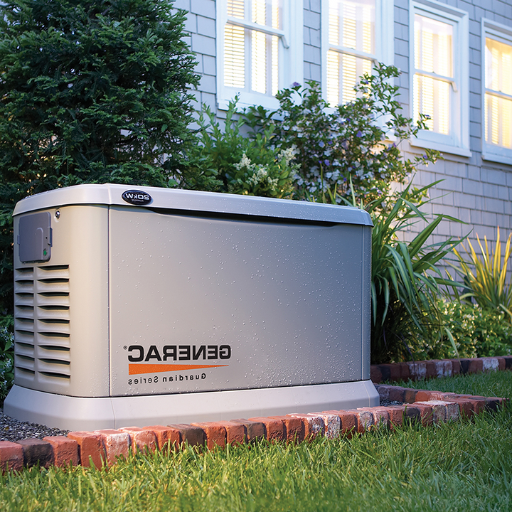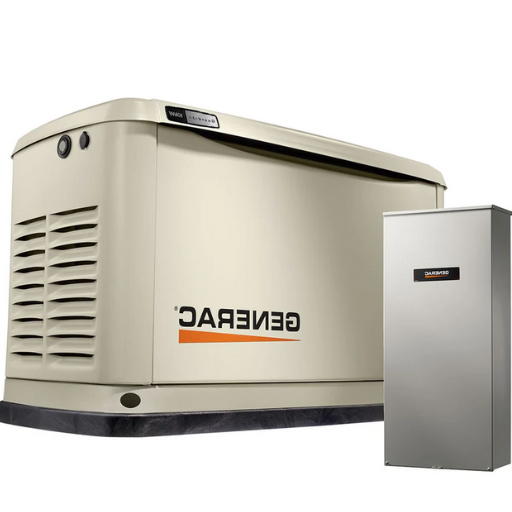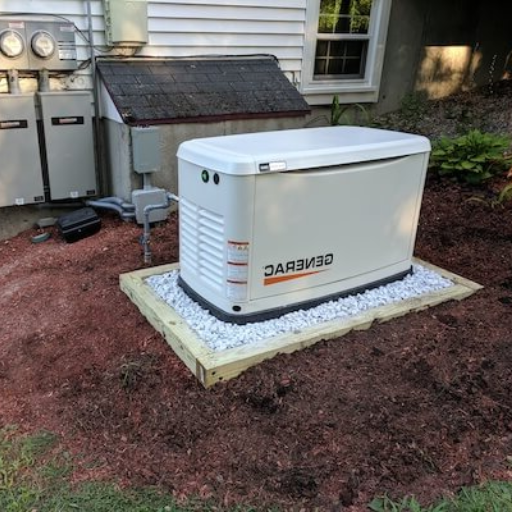A standby generator protects your home and gives you peace of mind during power outages. If needed, a generator can keep your home running smoothly. However, regular maintenance is required to function at peak performance. Routine care can help you avoid costly repairs, keeping your generator in working order. In this article, you will learn detailed practices on maintaining a standby generator while routinely inspecting it for issues to maximize its efficiency and lifespan. Whether you’re a first-time owner or a maintenance expert, this article will give everyone the knowledge required to ensure a generator functions at its best throughout the year.
What is Standby Generator Maintenance?

Like every other equipment, a generator requires maintenance that involves being on standby to serve during power disruptions. Standby generator maintenance is the practice of regularly monitoring and servicing any repairs or damages to the generator’s electrical components. Completing fluid checks, verifying the presence of oil and coolant, inspecting parts for deterioration, replacing filters, and testing the entire system for operability are key procedures of a generator’s maintenance. Performing these tasks ensures the equipment functions correctly while prolonging the generator’s lifespan.
Understanding Standby Generators
| Key Point | Details |
|---|---|
|
Purpose |
Backup power during outages. |
|
Fuel Types |
Natural gas, diesel, propane. |
|
Activation Time |
Usually 10–30 seconds after an outage. |
|
Power Monitoring |
Sensors detect utility power changes. |
|
Common Uses |
Homes, businesses, hospitals, and industries. |
|
Operation Duration |
Long hours, depending on fuel availability. |
|
Installation Location |
Outdoors, near buildings. |
|
Transfer Switch |
Seamlessly switches between grid and generator. |
|
Maintenance Frequency |
Weekly, monthly, and annual tasks are required. |
|
Key Components |
Engine, alternator, control panel, fuel system. |
|
Fuel Efficiency |
Depends on the generator size and load. |
|
Noise Level |
Modern units reduce noise efficiently. |
|
Safety Measures |
Proper ventilation and CO safety required. |
|
Typical Sizes |
Residential, commercial, and industrial grades. |
|
Generator Sizing |
Match total load requirement (+20% buffer). |
|
Cost Factors |
Varies by size, fuel, and installation. |
|
Legal Compliance |
NEC guidelines for safety and capacity. |
|
Regular Testing |
Self-test weekly to maintain readiness. |
|
Lifespan |
Properly maintained units last 15+ years. |
Importance of Regular Maintenance
Periodic maintenance of standby generators is needed to ensure reliability and longevity. According to industry standards, approximately 68% of generator failures stem from a lack of required maintenance, underscoring the importance of structured inspections. Without proper maintenance, sediment accumulation in the fuel system, aging batteries, or even a lack of routine oil changes can lead to significant breakdowns—or complete failures—during critical times.
Standby generators require maintenance every 6-12 months or as the manufacturer recommends, depending on usage, including replacing engine oil every 50-100 hours of operation, and load testing. Other modern advancements in generator technology propose monitoring systems to track performance metrics, which aid in earlier detection of problems, avoiding escalation.
The cost of poor maintenance may result in additional expenses and a reduction in performance. For instance, poorly timed unscheduled repairs could range from 1,000to1,000to10,000, depending on the severity. Contrastingly, investing in routine maintenance, averaging 200to200to600 yearly, makes it a more viable option to preserve operational readiness.
Proactive care also has positive effects on mental health. A well-kept generator protects critical devices, medical appliances, or business functions during extended outages or natural calamities, ensuring peace of mind and committing to precipitation, which guarantees that your system will function and perform optimally during peak stress situations.
Components That Require Attention
Routine generator maintenance includes evaluating and servicing major components of the generator to prevent any unscheduled downtime. Below are five elements of a generator that require checking at least biannually;
- Oil and Filter:
Never run out of oil; it’s the lifeblood of your generator. Depending on your fuel consumption rate, check the oil levels periodically and replace them along with the oil filters to ensure smooth functionality of the generator. Avoiding this can lead to engine failure. Most manufacturers recommend changing the oil every 50-100 hours of use.
- Battery:
Always seek to have a healthy battery because this drives every other component on the generator, and a low-charged battery can cause heaters and electronics to constantly de-energize. During every maintenance inspection, check if the battery is fully charged. When replacing it, ensure you replace it every three to five years, regardless of its usage.
- Fuel System:
Like every other fuel system, if the generator runs on fuel, the fuel lines need to be properly inspected to ensure there are no cracks, leaks, or blockages. Diesel generators constantly need inspection to ensure there is no algae growing over the fuel or fuel filter.
- Cooling System:
Constant checking to ensure the generator does not overheat is crucial, as it could damage the generator tremendously. Regularly check to ensure sufficient coolant levels are freely circulating in the hoses and belts along with the radiator to ensure no wear, fluid leaks, or worn hose clamps on the flush.
- Filters
Change and clean the air filters within the proper time interval to prevent dust and other debris from getting to the engine. Poorly maintained and clogged air filters may be linked to increased fuel consumption and poor vehicle performance, so make sure they are checked as per the schedule or after they show signs of wear.
How Often Should Standby Generators Be Serviced?

Residential standby generators should be maintained annually or every 200 operating hours, whichever comes first. Regular maintenance for reliable performance includes checking the oil and oil filters alongside the battery and fueling system. Always follow the manufacturer’s guidelines for directions on specified service intervals and tasks.
Setting Up a Maintenance Schedule
A precision-crafted maintenance schedule guarantees uninterrupted functionality while extending the lifetime of standby generators. Initial steps should involve referring to the manufacturer’s maintenance instructions; these guides are optimized for your exact model. I’ve put together a schedule that integrates both the manufacturer’s instructions and additional expertise:
- Weekly Tasks
Engage the generator in “exercise mode” and conduct start-up diagnostics to check for functional issues. Check for any apparent leakage, strange sounds, or flag feedback from the control panel.
- Monthly Tasks
Examine the coolant and oil levels and confirm that the values fall within acceptable limits. Look for corrosion and a sufficiently charged battery; remove any potential contaminants and straighten as required.
- Quarterly Tasks
All electrical contacts should be cleaned and tightened. The air filters should be examined first, and then cleaned or replaced as necessary. Belts and hoses must be examined for any undue deterioration, such as cracks or peeling.
- Annual Tasks
A full assessment of the standby generator should be done: changing the oil and oil filter while replacing the air filter, alongside an examination of the spark plugs. Cleaning the fuel tank of contaminants requires testing the fuel system; assessing the generator’s capacity should be followed by a load check.
- After 200 Hours of Operation
Even if it has not yet reached a year, change critical parts like the oil, oil filter, fuel filter, spark plugs, and other necessary components.
Based on the available data, generator servicing has the likelihood of needing repairs due to negligence surpassing 500, with severe damages costing more than 500 and severe damages costing more than 2000 in some instances. By adding routine servicing to your standby generator, the risks of generator emergencies will be reduced. Maintenance scheduling and inspections aid in improved performance tracking over time, which can be utilized for efficient resource planning for subsequent servicing.
Signs That Indicate Service is Needed
Excessive smoke output, unusual noises, inconsistency in power output, or trouble starting are solid indicators that your standby generator needs urgent maintenance.
What Are the Key Components to Check During Maintenance?

When performing standby generator maintenance, pay attention to the following aspects:
- Engine and Oil—Ensure the oil level and quality are maintained, the engine casing is free of leaks and excessive wear, and the oil is replaced according to the specifications provided by the manufacturer.
- Filters—Change the air and fuel filters as they become unusable to maintain proper airflow and fuel efficiency.
- Battery – Inspect the battery for charge and corrosion. Confirm all connections on the battery are tight.
- Coolant System – Check the coolant levels and inspect the system for leaks or contamination.
- Fuel System – Inspect all fuel access lines for blockages.
- Control Panel—Operate the panel to start, run, and shut down the generator properly. This should be done in the absence of power to the facility.
Completing these checks within the provided intervals increases your standby generator’s reliability when required.
Inspecting the Air Filter
Safety comes first. I power off and cool the generator before inspecting the air filter so there are no risks. After that, I located the air filter and removed its cover. The filter is also removed. I inspect the filter for dust or damage. If it is reusable, I clean it, but if it is damaged or too dirty, I replace it. This allows the generator to get the proper airflow needed for optimal performance.
Checking the Spark Plug
Maintaining the generator’s efficiency and overall performance requires the spark plug to be checked regularly, It’s essential to follow all steps to perform the evaluation correctly. Here is how you check the spark plug of your generator:
Step 1: Turn Off the Generator
Locate the off switch and turn it off. Ensure that the generator has completely powered down and cooled down.
Step 2: Locate the Spark Plug
The spark plug is easily found on the generator’s panel or cover, and it’s best to check the manual to make sure you’re on the right track.
Step 3: Remove the Spark Plug
One can simply use the wrench and unscrew the part at this stage. Ensure that the spark plug isn’t overtightened; otherwise, this can lead to damage of some sort. The spark plug is also sought after because it is user-friendly. After getting the spark plug out, check for signs of wear, like corrosion, buildup of carbon, etc.
Step 4: Clean the Spark Plug
A wire brush comes in handy here. If the carbon dirt is removed correctly, grab something you can gently scrub with. It’s advised not to be overly rough as damage may
Step 5: Check the Spark Plug Gap
Grab a caliper and a wrench and measure. It is best if you come adjusted, so changing your measures as per the manufacturer’s specs would be the best if you want everything to fall in line.
Ensuring all steps are followed can help ensure proper maintenance of the generator, save it from wear, and guarantee a longer lifespan. However, if severe wear and tear is noted, changing or replacing the spark plug might be necessary.
Evaluating the Oil Filter and Oil Change
Periodically reviewing and maintaining the generator’s oil and oil filter will enhance its life and performance. Oil lubricates the internal combustion engine’s moving parts, lowers friction, and avoids wear, while oil filters clean impurities so clean engine oil will not be contaminated during recirculation.
Step 1: Monitor the Oil Amount and Its Quality
Starting with the oil dipstick, remove it and wipe it with a clean cloth before putting it back into the reservoir. Confirm that the oil dipstick is positioned correctly within the oil container. The oil must reach the recommended limits on the dipstick, which are the minimum and maximum markings. The oil must also undergo visual assessment to check if it is oil that has been sustained, is shiny, and of an orange hue. Oil that is dark, gritty, or emits a burnt odor indicates that the oil needs changing.
Step 2: Replace the Oil Filter
According to manufacturers’ recommendations, the oil filter should be changed every 100 to 200 hours or once every oil change session. Remove the filter with a filter wrench and replace it with a new, unsoiled one while applying oil to the filter gasket step, then rotating clockwise to tighten the filter to finger tight.
Step 3: Execute an Oil Change
Now it’s time to talk about removing the old oil using an oil drain plug. Make sure to let the oil flow into a generator-friendly container. Check the owner’s manual since every generator might require a different oil type, such as SAE 10W-30 or 5W-30. The Oil should be poured through a fill port, and the dipstick should be checked frequently so it doesn’t pass the correct oil level.
Facts and Figures
- An average heavy generator load is said to range between 50-100 hours, while light tops out at 6 months. Using the generator lightly, monthly or biannually, tops out in six months.
- Modern temperature-sensitive synthetic oils like SAE 5W-30, which are known to worsen generator performance at extreme temperatures, inspire many to improve their generator experiences.
- The decrease in engine efficiency due to dirty oil filters is between 10% and 15%. In turn, this increases fuel effectiveness over time.
Changing the oil alone is not enough. Proper evaluation, along with the consistency of the oil filter, improves the lifespan of the generator and its efficiency to prolong its dependability during crucial times. In addition, make sure to avoid local environmental laws when disposing of the oil and filters.
What Are the Best Practices for Maintaining Standby Generators?

| Key Point | Details |
|---|---|
|
Proper Placement |
Install outdoors, away from windows and doors. |
|
Routine Maintenance |
Follow the manufacturer’s schedule for checks and servicing. |
|
Use Transfer Switch |
Safely connects the generator to the home power. |
|
Regular Cleaning |
Keep the unit clean and the area debris-free. |
|
Monthly Testing |
Run the generator monthly for 20–30 minutes. |
|
Change Oil and Filters |
Perform annually or as recommended. |
|
Check Battery |
Ensure it’s fully charged and operational. |
|
Inspect for Corrosion |
Check and protect surfaces regularly. |
|
Use Fresh Fuel |
Prevent clogs by replacing old fuel. |
|
Professional Servicing |
Schedule annual check-ups with certified technicians. |
Performing Regular Inspections
Your standby generator requires regular inspections to maintain its set reliability and durability. You should complete a full check-up of each of your generator’s parts, looking for damage that can be fixed before the component is no longer functional. Industry experts recommend conducting inspections once every month, as this eliminates the chances of random breakdowns. Here is a list of essential things to have in mind during generator inspections:
- Keep an Eye on Fluid Levels
Keep track of the coolant, oil, and fuel volumes to guarantee they are not running low. Low fluid levels can increase the chances of overheating, wear and tear, and even generator failure. Always follow the manufacturer’s marked guidance. Research shows that having the right quantity of oil in a generator boosts its overall efficiency by 20%.
- Test the Battery
Standby batteries are among the most critical components of generators. Remember to check for weak connections, loose bits of metal, corrosion, and proper charge. Data reports that roughly 85% of generator failures stem from battery failure of some sort. To ensure an uninterrupted power supply, it is better to check the battery’s voltage from time to time.
- Check Hoses and Belts
Over a sufficient period, hoses and belts will start to loosen, while also cracking. Hoses and belts should be checked for signs of fraying and other damage forms. If found, those pieces require immediate replacement. Even the most minor cracks can trigger devastatingly critical failures during operation.
- Air Filters Must be Cleaned
Dust and dirt particles may get trapped in the air filters, limiting air flow, which can degrade the generator’s performance. Cleaning or replacing filters per the maintenance schedule can improve efficiency and prolong the generator’s lifespan.
- Checking the Generator performance under Load
Occasionally, you should check the generator output against a set load to determine if it aligns with the expected figures. This can help clear exhaust system blockages, leading to increased functionality. Running a generator under load for 20 minutes a month, when performed with the proper care, resolves 40% of issues associated with buildup in 40% of instances.
Following the above guidelines ensures the generator is on standby, ready to provide an uninterrupted power supply during downtime, and optimizes its reliability. Make sure to go through the manufacturer’s manual, especially the clauses highlighted in bold, as they pertain specifically to your model and detail other local instructions. Also, make sure to log every inspection and maintenance activity along with the details to help shed light on performance anomalies.
Hiring a Qualified Technician
I specialize in hiring a qualified certified technician with relevant work experience specific to my generator’s make and model. I check their CVs, references, and reviews to ensure that they have a substantial work history. In addition, I prefer technicians who prepare in-depth service reports and specialize in proactive maintenance strategies for the efficient operation of my generator.
Ensuring Proper Fuel System Management
Effective fuel management means regularly checking and maintaining the quality of fuel, cleaning or replacing filters, and ensuring that correct storage conditions are maintained to avoid contamination or degradation.
How do you troubleshoot common issues with standby generators?

| Key Point | Details |
|---|---|
|
The generator won’t start |
Check fuel, battery, and circuit breakers. |
|
The engine cranks but stops |
Check fuel lines and replace spark plugs. |
|
No power output |
Inspect the load and reset circuit breakers. |
|
Constant low voltage |
Verify voltage regulator functionality. |
|
Yellow or red warning light |
Follow the steps to clear error codes. |
|
Unusual engine noise |
Inspect air filters and adjust settings. |
|
Persistent sputtering |
Clean the carburetor and replace the air filter. |
|
Overheats quickly |
Inspect coolant levels and ventilation. |
Addressing Power Outage Problems
A home standby generator will fail to perform during a power failure for various reasons. Noticing and solving these issues guarantees that the fuel supply is uninterrupted while the generator works seamlessly. Five possible power outage problems are identified below:
- Battery Malfunction
- Details: Keeping standby generators on standby mode is as useful as keeping dead or weak batteries on standby. Failing to charge, corroded connectors, or deteriorating batteries can lead to being out of charge.
- Solution: Test battery voltage, replace batteries every 3-5 years depending on usage, and inspect battery connections frequently.
- Issues Related To Fuel Supply
- Details: Blocked fuel lines, insufficient fuel, or tainted fuel affects the generator’s functioning negatively.
- Solution: Ensure fuel tanks are adequately filled, inspect fuel lines for clogs or cracks, and use high-quality fuel to prevent contamination.
- Tainted Air Filters
- Details: Dirty air filters result in poor airflow to the engine, which negatively impacts combustion residuals.
- Solution: Replace or clean the air filter according to the manufacturer’s directions to maintain tremendous fuel consumption efficiency.
- Oil and Coolant Level Adjustments
- Details: As operating temperatures get hotter, a standby generator starts shutting down immediately to prevent the engine from being damaged. This only happens when the device has a low oil or coolant supply.
- Solution: Refill or replace fluids before operating the generator, while checking oil and coolant levels.
- Tripping the Circuit Breaker Mechanism
- Overloading a generator sets the risk of tripping the circuit breaker as it will subsequently cut off the power supply.
- Prevent overload conditions by managing the electrical load within supportive parameter limits, resetting the breaker as needed.
With regular inspection and maintenance, unexpected power interruptions can be avoided, ensuring standby generators work effectively when needed.
Dealing with Exhaust and Fuel Clogs
| Key Point | Details |
|---|---|
|
Use fresh fuel |
Replace old fuel to prevent clogging issues. |
|
Clean the fuel tank |
Drain and clean to remove sediment buildup. |
|
Inspect fuel lines |
Check for leaks and obstructions regularly. |
|
Change clogged filters |
Replace fuel filters to restore flow. |
|
Prevent moisture contamination |
Store fuel in sealed, dry containers. |
|
Check exhaust system |
Clear blockages to ensure safe operation. |
|
Clean carburetor |
Remove residue causing fuel flow problems. |
|
Monitor fuel quality |
Use high-grade fuel for better performance. |
Resolving Transfer Switch Malfunctions
The transfer switch is one of the most essential parts of a standby generator system. It allows the switchover from Utility power to Generator power and vice versa in case of outages. If a transfer switch malfunctions, it can make your entire generator system futile and pose a considerable threat during exigencies.
What leads to the malfunctioning of Transfer Switches
- Excessive Use Leading To Worn-Out Contacts: Due to repetitive actions, the wires can loosen, causing insufficient mechanical movement of a transfer switch. Lack of frequent checking and steps to replace worn elements easily solves this problem.
- Weak Wiring/Improper Installation: Circuit mistakes like bad wires, inadequate mounting, or restricting legitimate patterns could result in no action in the transfer switch. Some of these could be checked by professionally guided construction and periodical checkups.
- No Routine Maintenance: Over time, a buildup of dust, dirt, and other debris can make a certain part of the machine non-functional. A proper maintenance schedule will ensure a seamless working setup.
- Failing Sensor or Controls: Sensors and the control unit command the detection of a power outage and control the Switch. Due to worse electrical surges or old age, such elements could malfunction, thus rendering them useless.
How To Fix Malfunctions:
- Perform Routine Diagnostics: Test the transfer switch at monthly intervals to confirm that it works during power outages to avoid inconveniences. Following the manufacturer’s recommended testing procedure will optimize fault discovery.
- Engage Professional Services: Examine the switch once every year. Check every wire, contact and functionality for issues.
- Manage Power Loads: Power loads higher than the operating limit may overload the transfer switch. Provide the necessary supervision and control load limits to ensure proper performance.
- Replace Parts That Are Close To Expiry: Provided the conditions are right, a transfer switch survives between 20 and 25 years. To avoid faults, it is better to replace switches or components close to expiry.
Other Relevant Information:
As manufacturers and power management professionals like Eaton and Generac stated, performing maintenance and regular checks can reduce up to 80% of transfer switch problems. It was also noted that transfer switch problems take up to 25% of generator failures, proving that this part should be prioritized for smooth functionality.
Replacing parts close to their expiry will ensure the backup system will function under any conditions.
References
-
Getting serious about safety and loss prevention emergency power and standby generators – Discusses maintenance and inspections for generator sets.
-
POSITION STATEMENT: ELECTRICAL STANDBY – Covers standby rates and generator capacity considerations.
-
Use of performance-monitoring to improve reliability of emergency diesel generators – Explores maintenance and monitoring techniques for emergency diesel generators.
Frequently Asked Questions (FAQ)
Q: Why do standby generators require regular maintenance?
A: Standby generators require regular maintenance to operate efficiently and reliably during power outages. Regular checks help identify potential issues early, keeping your generator running smoothly and providing peace of mind.
Q: How often should I check the battery in my home generator?
A: It is recommended to check the battery of your home generator at least twice a year. Regular battery checks ensure the generator is ready to start when needed.
Q: What are some key home generator maintenance practices?
A: Key maintenance practices for home generators include checking and changing the oil, inspecting the fuel filter, and ensuring the exhaust system is clear. These steps help keep the generator properly maintained.
Q: Is it necessary to hire a generator technician for maintenance?
A: While the owner can perform some routine maintenance tasks, it is advisable to hire a generator technician for comprehensive inspections. A professional can provide a thorough check-up and address any complex issues.
Q: How do I ensure my generator runs efficiently during an emergency?
A: To ensure your generator runs efficiently during an emergency, perform regular maintenance, check and replace the fuel filter if needed, and start the generator for a few minutes every month to keep it in good condition.
Q: What specific maintenance needs do Kohler and Generac generators have?
A: Both Kohler and Generac generators require regular oil changes, battery checks, and inspection of hoses and connections to ensure they operate effectively. Each brand may have specific guidelines, so it is advisable to consult the user manual.
Q: How does neglecting proper maintenance affect my backup generator?
A: Neglecting proper maintenance can lead to decreased efficiency, unexpected breakdowns, and costly repairs. It may also shorten the lifespan of your backup generator, leaving you without power during critical times.
Q: Can I perform generator maintenance, or should I always call for professional help?
A: The owner can perform basic tasks, like checking the oil and ensuring the generator is clean. However, it is recommended that a professional generator technician be called for detailed inspections and repairs.
Q: What role does the fuel type, such as diesel, play in the maintenance routine?
A: The fuel type, such as diesel, significantly affects maintenance routines. Diesel generators may require frequent fuel checks and filter replacements to prevent clogging and ensure the genset operates smoothly.







